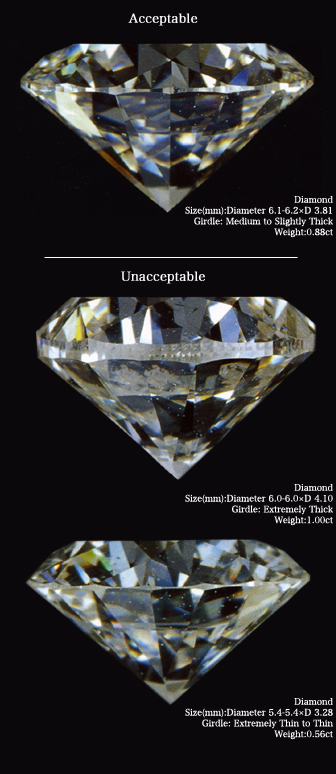GIRDLE THICKNESS
When looking at the diamonds in antique and estate rings that are offered for sale at auction, one notices that almost all of them have chipped girdles. Dealers will repolish such diamonds and recirculate them in the market. It is sage to assume that most diamonds larger than three carats are repolished and recirculated diamonds making a repeat appearance in the marketplace. Though diamonds are hard gemstones, their girdles are fragile if thin, making it especially important to pay attention to girdle thickness.
Considering the fundamental nature of jewelry in which the girdle area is utilized over and over under various conditions, the girdle thickness of “medium to slightly thick” shown on top to the right is ideal. This will not guarantee absolute safety, but overall it reduces the likelihood of damage to a fraction of what it would be otherwise. A diamond with a “very thick” girdle, resulting from drastic efforts to reduce weight loss from the rough, is not recommended, and jewelers need to have the ability to decide what the ideal range is and to explain it to their customers.
A diamond like the one on the bottom with a thin or “knife-edge” girdle may be damaged during setting when the prongs are pushed in to secure it. Such diamonds may also be chipped when they are simply struck against a hard surface. Diamonds with thin girdles may be nice to look at when they have just been polished, but they are a troublesome lot whose flaw becomes apparent when the time comes to set them in jewelry. It is not a pleasant thing to watch a diamond gradually become damaged and less beautiful over time as you are wearing it.
|
 |